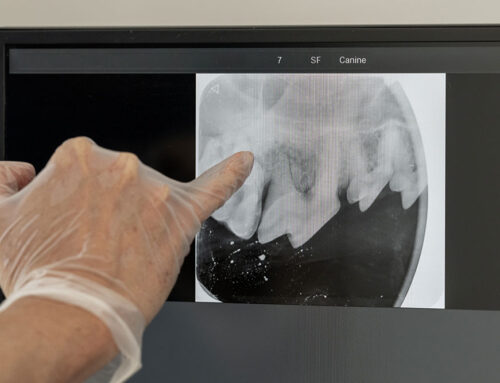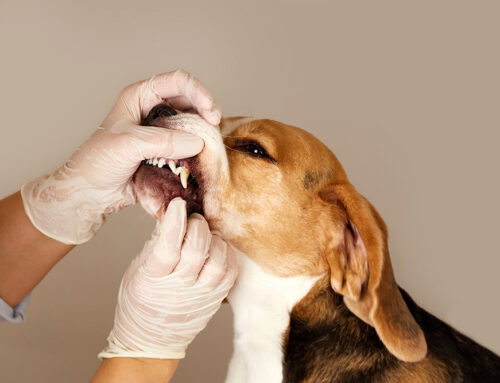Sudden Behavior Shifts? What Your Pet Might Be Telling You
One day, your dog is greeting neighbors with tail wags, and the next, he’s growling at the mail carrier. Or maybe your usually aloof cat suddenly won’t leave your side- or worse, is peeing outside the litter box. Sudden behavioral changes in pets can be confusing, frustrating, and- let’s be honest- a little alarming.
At Town & Country Animal Hospital in Athens, Alabama, we hear these concerns all the time. Behavior is one of the most important, and often overlooked, indicators of a pet’s well-being. While a shift in attitude doesn’t always signal something serious, it’s rarely “just a phase.” Understanding the possible causes helps you respond early, effectively, and with confidence.
What Counts as a Behavioral Change?
We’re not talking about gradual personality quirks. Sudden changes are usually noticeable within days or weeks and feel “off” for your pet’s normal routine. Some common examples include:
- A normally friendly pet becoming aggressive or withdrawn
- Sudden vocalizing, pacing, or destructive behavior
- Litter box accidents or house soiling in an otherwise house-trained pet
- Avoiding touch, hiding, or clinginess out of the blue
These behaviors might look random on the surface, but they often have something important to say.
Why Sudden Behavior Changes Matter
Pets don’t communicate with words, but they do communicate- and behavior is a big part of that. A sudden shift often means your pet is trying to tell you something, and that “something” could be physical pain, emotional stress, or an underlying illness. The earlier we understand what’s going on, the sooner we can help.
Common Medical Reasons Behind Behavior Changes
One of the first things we look at in cases of sudden behavior change is your pet’s health. Pain or illness is a major driver of mood or habit shifts. Here are a few common culprits:
- Arthritis: Reluctance to move, irritability when touched, or avoiding stairs.
- Dental disease: Pain while eating or sudden aversion to chew toys.
- Neurological issues: Disorientation, pacing, or behavioral regression.
- Age-related brain changes like Signs of Cognitive Decline in Older Pets – Colorado State University
- Hormonal conditions: Disorders like hyperthyroidism in cats can lead to restlessness, aggression, or vocalization.
Recognizing Pain-Driven Behavior
Pets often mask pain, so behavioral clues may be your only heads-up. Watch for:
- Limping or reluctance to jump
- Sudden changes in appetite
- Aggression during grooming or handling
- Whining or growling when touched
These signs may seem small, but they could be red flags. The What’s Wrong? Common Pet Pain Signs guide is a helpful reference for spotting subtle discomfort.
Emotional and Environmental Triggers
Not all behavioral changes stem from illness. Emotional stressors can be just as powerful.
Here are some common life events that can trigger changes:
| Trigger | Possible Behavior Shift |
| New pet or baby in the house | Withdrawal, marking, irritability |
| Move to a new home | Hiding, lack of appetite, barking |
| Loud noises (thunder, fireworks) | Pacing, hiding, destructive behavior |
| Owner absence | Separation anxiety, vocalizing, chewing |
Stress-induced behaviors are often mistaken for misbehavior. But the truth is, your pet is adapting to a new environment or struggling to feel secure.
For pets especially sensitive to noise, Safe and Sound: Noise Aversion in Pets offers useful tips for managing those high-anxiety moments.
What to Expect at the Vet
If your pet is acting out of character, don’t wait to schedule a visit. Behavioral symptoms are just as important to report as physical ones.
Here’s how we approach the process:
- Detailed history: When did the behavior change? What changed at home?
- Full physical exam: To check for pain, illness, or injury.
- Diagnostic testing: This may include blood work, urinalysis, or imaging if needed. The goal is to rule out or identify any physical causes before moving to behavior-focused solutions.
Treatment Options: A Tailored Approach
Once we understand what’s causing the change, we’ll outline a treatment plan. Depending on the cause, this might include:
- Medical treatment: Managing arthritis, dental disease, or other conditions.
- Pain relief: Medication, acupuncture, or physical therapy if pain is contributing to the behavior.
- Behavioral support: Training, desensitization, or anti-anxiety medication.
- Environmental adjustments: Changes at home to make your pet feel more secure.
Some pets may need short-term support. Others might benefit from longer-term management. Either way, our approach is individualized and designed to meet both you and your pet where you are.
At-Home Strategies That Make a Difference
While medical care is crucial, your role at home is just as important. Here are some tips to support your pet:
- Stick to a routine: Pets thrive on predictability. Regular feeding, walks, and playtime help reduce anxiety.
- Enrichment matters: Puzzle feeders, scent games, and toys can relieve boredom and redirect nervous energy. Check out these Dog Enrichment Ideas.
- Pheromone diffusers: Products like Adaptil (for dogs) or Feliway (for cats) can provide calming effects.
Want to monitor your dog’s health more closely? The DIY Dog Checkup – Kinship offers great ways to stay on top of changes between vet visits.

Getting the Most From Your Vet Visit
To help us help you, come prepared:
- Bring a log of behaviors: Dates, times, and triggers are all useful.
- Capture the behavior in photos or video if possible.
- Provide a list of current medications and supplements.
Here are a few smart questions to ask during your appointment:
- What could be causing this behavior?
- Are there medical issues we need to rule out?
- What are our treatment options?
- What can I do at home to support progress?
FAQs About Sudden Behavior Changes
Q: My dog started growling out of nowhere. What should I do?
A: Growling is a warning sign and should never be dismissed. It may be fear, pain, or a reaction to something in the environment. We recommend an exam to identify the cause.
Q: My cat is avoiding the litter box. Is she being stubborn?
A: No- this is rarely a behavioral “choice.” Medical issues or stress are often to blame. A vet visit can help determine what’s going on.
Q: How quickly can I expect results from behavior treatment?
A: It depends. Some issues improve in weeks; others may take months. Consistency and early intervention are key.
Your Partner in Peace of Mind
At Town & Country Animal Hospital, we know how stressful it can be when your pet starts acting differently overnight. The good news? You’re not alone, and there’s usually a reason- and a solution.
If something about your pet’s behavior doesn’t feel right, trust your gut. Schedule an appointment or reach out to our team. We’re here to guide you with compassion, expertise, and a commitment to helping both you and your pet feel better, together.







Leave A Comment